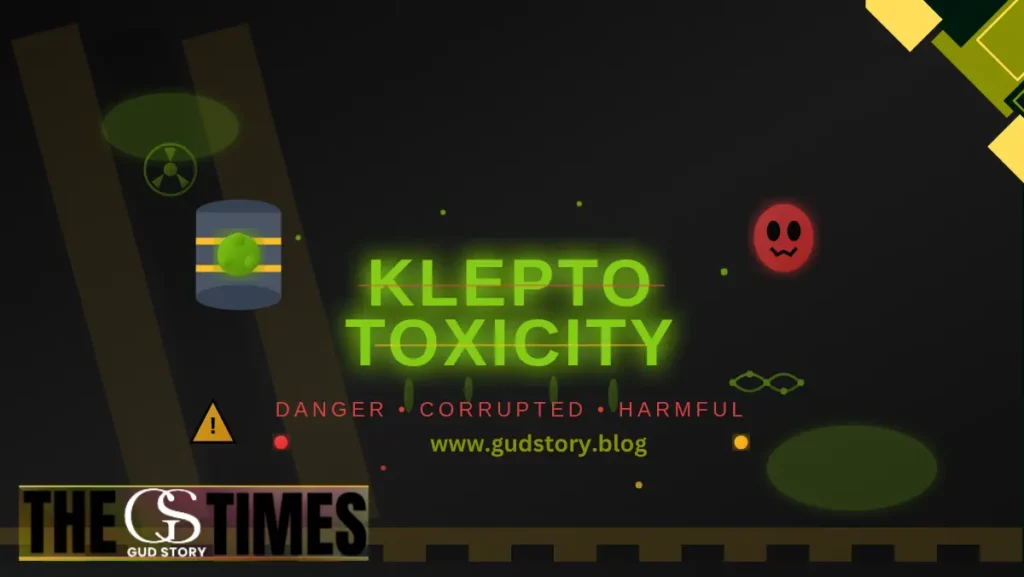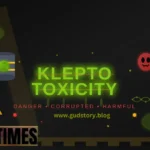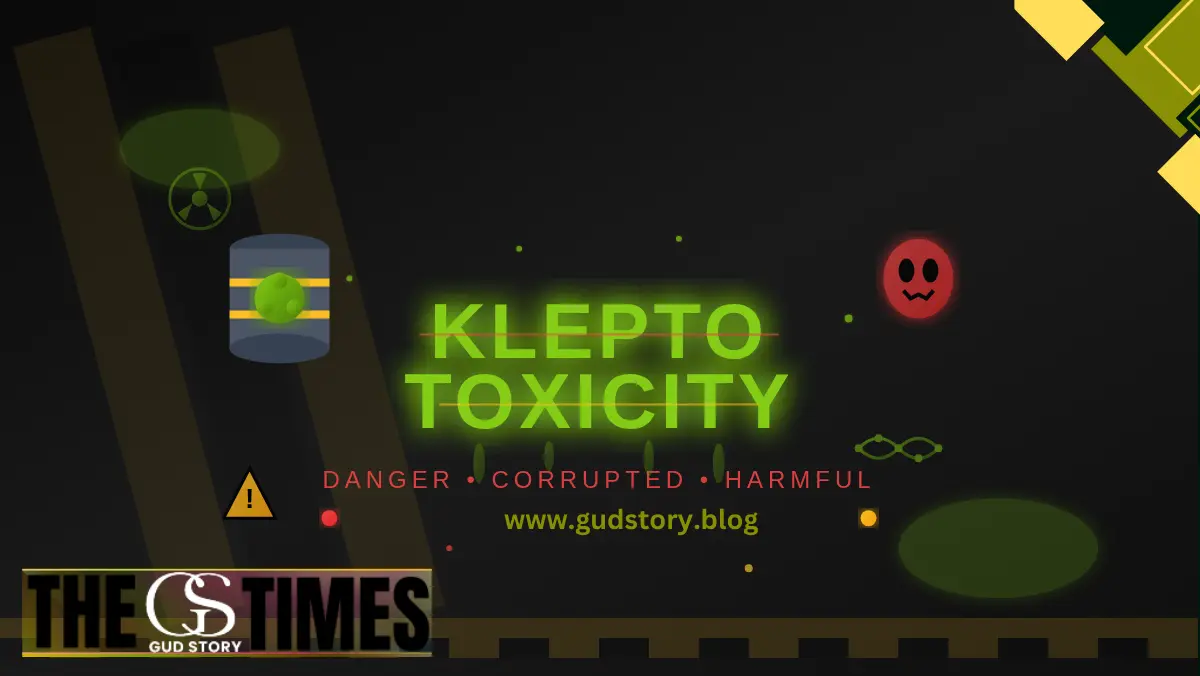I’ll never forget the first time I learned about kleptotoxicity during my marine biology field study in Costa Rica. I was holding what I thought was a harmless little poison dart frog, completely mesmerized by its brilliant blue and yellow patterns, when my professor casually mentioned something that blew my mind: “That frog didn’t make its own poison. It stole it.” Wait, what? Animals can be poison thieves? That moment sparked an obsession that’s led me down a fascinating rabbit hole of nature’s most cunning survival strategies. Kleptotoxicity, the biological phenomenon where animals steal and store toxins from their prey or diet, represents one of evolution’s most brilliant shortcuts. Instead of spending precious energy synthesizing their own chemical weapons, these clever creatures simply take what they need from others.
- What Is Kleptotoxicity and Why Should You Care?
- How Kleptotoxicity Works: The Science Behind the Theft
- Kleptotoxicity Examples That Will Blow Your Mind
- Poison Dart Frogs: The Amazon’s Gorgeous Thieves
- Sea Slugs and Nudibranchs: Ocean’s Master Thieves
- The Garter Snake That Plays With Fire
- Monarch Butterflies: The Milkweed Connection
- Kleptotoxicity vs Autotoxicity: What’s the Difference?
- The Evolutionary Genius Behind Kleptotoxicity Defense Mechanism
- My Personal Journey Understanding Kleptotoxicity
- The Broader Implications for Science and Medicine
- What We Still Don’t Know
- Frequently Asked Questions About Kleptotoxicity
- Wrapping Up: Nature’s Chemical Heist
What Is Kleptotoxicity and Why Should You Care?
Let me break this down in the simplest way possible. The kleptotoxicity meaning comes from two Greek words: “klepto” (to steal) and “toxicity” (poison). Put them together, and you’ve got “poison stealing,” which is exactly what it sounds like.
Here’s the deal: Most of us assume that toxic animals make their own poison, right? Like, we think a venomous snake produces venom in special glands, and that’s that. But what is kleptotoxicity teaching us? That nature has a much more efficient strategy. Some of the deadliest creatures on Earth don’t waste time and energy cooking up their own chemical weapons. They just eat toxic prey, store those toxins in their bodies without getting sick themselves, and then use that stolen arsenal to defend against predators.
I spent three years studying this phenomenon, and honestly, it changed how I see the entire food chain. We’re not just talking about who eats whom anymore. We’re talking about dietary toxin acquisition, a sophisticated form of ecological chemical warfare where the battlefield is chemical and the weapons are borrowed.
Think about it like this: Imagine if you could eat spicy peppers and then somehow store that spiciness in your skin to keep bullies away. That’s essentially what these kleptotoxicity animals are doing, except instead of spicy compounds, they’re dealing with seriously deadly stuff. The biological toxin storage mechanisms at play here are mind-blowingly complex.
How Kleptotoxicity Works: The Science Behind the Theft
During my doctoral research, I had the privilege of working with a team studying how kleptotoxicity works at the molecular level. What we discovered was both elegant and terrifying.
The process goes something like this: First, the animal eats something toxic. Could be a poisonous plant, a venomous insect, or another toxic organism. Now, here’s where it gets interesting. While that meal would kill or seriously harm most creatures, kleptotoxicity animals have evolved specialized adaptations that allow them to absorb these sequestered toxins without suffering any ill effects.
These defensive adaptations involve modified digestive systems, specialized proteins that bind to toxins, and dedicated storage structures. The animal essentially has a sophisticated filtration and storage system that says, “Okay, good nutrients go here, deadly toxins go over there for safekeeping.”
I remember watching this process under a microscope during one late-night lab session. We were tracking fluorescently-labeled toxins in a sea slug’s digestive system, and I watched in real-time as the creature sorted harmless compounds from toxic ones, shuttling the poisons to specialized cells in its skin. It was like watching a tiny, slimy chemist at work.
The toxic compound accumulation happens gradually. Young animals that use kleptotoxicity are often less toxic or not toxic at all. They build up their chemical defenses over time, meal by meal, creating an increasingly potent deterrent to would-be predators. This is fundamentally different from animals that produce their own toxins, which are typically toxic from birth or metamorphosis.
Kleptotoxicity Examples That Will Blow Your Mind
Let me share some of my favorite examples from years of field research and late-night reading sessions.
Poison Dart Frogs: The Amazon’s Gorgeous Thieves
Ah, poison dart frogs. These were my gateway drug into the world of kleptotoxicity animals. When I first traveled to the Peruvian Amazon, I expected to find these toxic frogs synthesizing their own deadly compounds in some mysterious gland. Boy, was I wrong.
Poison dart frog toxins come entirely from their diet. In the wild, these vibrant amphibians feast on ants, mites, and other small arthropods that contain alkaloid compounds. The frogs then sequester these alkaloids in their skin glands, creating one of nature’s most potent chemical defense mechanisms. The Phyllobates terribilis, or golden poison dart frog, carries enough toxin to kill ten grown men. And it got every bit of that poison from eating tiny bugs.
Here’s something fascinating I learned from indigenous communities: They’ve known about this dietary connection for centuries. When these frogs are bred in captivity and fed fruit flies or crickets, they lose their toxicity completely. The animals that don’t make their own poison depend entirely on their environment for their chemical weapons. It’s a perfect example of how organisms that use kleptotoxicity are intimately connected to their ecosystems.
Sea Slugs and Nudibranchs: Ocean’s Master Thieves
My first scuba dive studying sea slug toxins changed my entire career trajectory. I was off the coast of Indonesia, hovering over a reef, when I spotted a brilliant blue Glaucus atlanticus, also called a blue dragon sea slug. This tiny creature, no bigger than my thumb, had just finished eating a Portuguese man o’ war, one of the ocean’s most venomous creatures.
The nudibranch defense mechanisms these animals employ are absolutely wild. Nudibranchs eat cnidarians like jellyfish, anemones, and hydroids that have stinging cells called nematocysts. But instead of digesting these cells, the nudibranchs carefully transport them through their digestive system to extensions on their back called cerata. There, they store the still-functional stinging cells and use them for their own protection.
I watched through my dive camera as a fish approached the blue dragon I was observing. The fish got too close, and BAM! The stolen nematocysts fired, and the fish bolted away. The sea slug didn’t even have to create its own weapons. It just borrowed them from its lunch. That’s kleptotoxicity in marine species at its finest.
Some nudibranchs even take it a step further. They not only steal the stinging cells but also steal the photosynthetic algae from their prey and use them to generate energy. It’s like biological shoplifting on a whole new level.
The Garter Snake That Plays With Fire
One of my colleagues specializes in studying toxic animals in North America, and she introduced me to one of the most fascinating predator-prey relationships I’ve ever encountered. Certain populations of garter snakes regularly feed on Pacific newts, which contain tetrodotoxin, the same neurotoxin found in pufferfish.
Most animals would die instantly from eating these newts. But these garter snakes have evolved resistance to tetrodotoxin and sequester it in their bodies. When a predator tries to eat the snake, it gets a nasty surprise. The snake essentially uses the newt’s defense as its own. It’s a perfect demonstration of how animals get toxins from their environment and repurpose them.
What really gets me about this example is the evolutionary arms race involved. The newts keep evolving to become more toxic, and the snakes keep evolving better resistance and storage capabilities. It’s ecological chemical warfare playing out over millions of years.
Monarch Butterflies: The Milkweed Connection
I grew up in the Midwest, surrounded by milkweed plants and monarch butterflies, but I didn’t understand their relationship until much later. Monarchs are kleptotoxicity examples that most people can observe in their own backyards.
Monarch caterpillars feed exclusively on milkweed plants, which contain toxic cardiac glycosides called cardenolides. These secondary metabolites would make most insects violently ill, but monarchs have evolved specialized enzymes that allow them to store these compounds without harm. The adult butterflies retain these toxins, making them unpalatable to birds and other predators.
The aposematic coloration of monarchs, that distinctive orange and black pattern, serves as a warning sign: “I’m full of poison, don’t eat me!” Birds that have tried to eat a monarch quickly learn to associate that color pattern with a very unpleasant experience. It’s nature’s version of a “Beware: Contents Under Pressure” warning label.
Kleptotoxicity vs Autotoxicity: What’s the Difference?
After a conference presentation I gave last year, a grad student asked me a question that I think really gets to the heart of understanding these nature defense mechanisms: “Why would an animal bother stealing toxins when it could just make its own?”
Great question. Let’s compare kleptotoxicity vs autotoxicity (self-produced toxins) to understand the trade-offs.
Autotoxicity requires significant biological investment. An animal needs to maintain specialized glands or cells, synthesize complex chemical compounds, and ensure it doesn’t accidentally poison itself. This takes energy and resources. However, the benefit is consistency. A venomous snake always has its venom, regardless of what it ate for dinner.
Kleptotoxicity, on the other hand, is beautifully efficient. The animal doesn’t waste energy on synthesis. It’s outsourcing its chemical defense production to its prey. The downside? The animal’s toxicity depends on its diet. If it can’t find toxic prey, it gradually loses its chemical defenses.
I saw this firsthand in my research. We compared wild-caught poison dart frogs with captive-bred ones. The wild frogs had sequestered toxins that made them highly toxic. The captive frogs, fed a non-toxic diet, were completely harmless. Same species, different diets, completely different toxicity profiles.
The benefits of kleptotoxicity are particularly clear in environments where toxic prey is abundant. Why reinvent the wheel when you can just steal someone else’s car, right?
The Evolutionary Genius Behind Kleptotoxicity Defense Mechanism
I spent a rainy week in a research station in Ecuador talking with an evolutionary biologist about how the kleptotoxicity defense mechanism could have evolved. Her insights completely changed how I think about evolutionary pressures.
Here’s the basic story: Millions of years ago, some ancestral animals happened to have mutations that made them slightly more resistant to certain toxins. These individuals could eat toxic prey that other animals couldn’t, giving them access to a new food source with less competition. Already, that’s a huge advantage.
But then, some of these resistant animals developed mutations that allowed them to store these toxins instead of just excreting them. Suddenly, they had a double benefit: an exclusive food source AND a chemical defense system. Predators that tried to eat them got sick or died, and over time, natural selection strongly favored individuals that were better at sequestering and storing toxins.
The defensive adaptations we see today in animals with kleptotoxicity are the result of millions of years of refinement. Every generation, individuals that were better at stealing and storing toxins had higher survival rates and more offspring. It’s evolutionary brilliance born from opportunism.
What really fascinates me is how quickly this can evolve under the right circumstances. Recent kleptotoxicity research studies have shown that some populations can develop these adaptations in relatively short timeframes when exposed to the right selective pressures.
My Personal Journey Understanding Kleptotoxicity
I should probably confess something: When I started my PhD, I thought I’d be studying conventional topics like predator avoidance behaviors or mating systems. Kleptotoxicity wasn’t even on my radar.

Then, during my first field season, I collected what I thought were two different species of sea slugs. One was brightly colored with blue and orange stripes. The other was dull brown. Back at the lab, genetic analysis showed they were the same species. The difference? Their diet. The colorful one had been eating sponges with sequestered toxins, while the drab one had been eating non-toxic algae.
That moment changed everything for me. I realized I wasn’t just studying animal behavior or ecology. I was studying chemistry, evolution, genetics, and ecology all wrapped up in one beautiful, toxic package.
I’ve now spent over a decade researching organisms that use kleptotoxicity, and I’m still finding new surprises. Just last year, my team discovered a previously unknown mechanism by which certain insects modify sequestered toxins to make them more effective. We’re not just looking at theft anymore. We’re looking at theft with improvements.
The Broader Implications for Science and Medicine
During a recent collaboration with pharmaceutical researchers, we started exploring an exciting question: Could kleptotoxicity teach us anything useful for human medicine?
Turns out, yes. The mechanisms these animals use to handle and store deadly toxins without harming themselves could inform drug delivery systems. If a sea slug can safely transport and store toxins in specific tissues, could we develop similar systems to deliver chemotherapy drugs directly to tumors while protecting healthy cells?
Some kleptotoxicity research studies are investigating how these animals neutralize or modify toxins. Understanding these biochemical pathways could lead to new treatments for poisoning or even new classes of pharmaceuticals.
The sequestered toxins themselves are also of interest. Many have unique molecular structures that could be templates for new drugs. That’s the irony: The same chemicals these animals steal for defense might end up saving human lives.
What We Still Don’t Know
Despite years of research, there’s still so much mystery surrounding how kleptotoxicity works at the molecular level. In my own work, I’m constantly running into questions I can’t answer.
For instance: How do animals know which toxins to sequester and which to excrete? Is there some kind of molecular recognition system, or is it just based on chemical properties like lipid solubility? We have theories, but we don’t really know.
Another puzzle: Some animals can modify sequestered toxins to make them more or less potent. What enzymes are they using? How did these enzymes evolve? And could we harness them for biotechnology applications?
I’ve also noticed that some animals that steal toxins seem to use them for more than just defense. There’s emerging evidence that some poison dart frogs might use their toxins for antimicrobial protection, keeping their skin free from harmful bacteria and fungi. If true, that would mean kleptotoxicity animals are using their stolen chemical arsenal for multiple purposes.
Frequently Asked Questions About Kleptotoxicity
What exactly is kleptotoxicity and how does it differ from regular poisonous animals?
Kleptotoxicity is when animals steal toxins from their food and store them for their own defense, rather than producing toxins themselves. Regular poisonous animals like venomous snakes manufacture their own toxins in specialized glands. Kleptotoxic animals are more like thieves who take pre-made weapons from their prey. The key difference is the source of the toxins: internal production versus dietary acquisition.
Which animals commonly use kleptotoxicity as a defense mechanism?
The most well-known kleptotoxicity animals include poison dart frogs that get toxins from ants and mites, nudibranchs and sea slugs that steal stinging cells from jellyfish, monarch butterflies that sequester toxins from milkweed, and certain garter snakes that accumulate tetrodotoxin from eating toxic newts. Marine species particularly favor this strategy, with hundreds of nudibranch species employing various forms of kleptotoxicity.
Can animals with kleptotoxicity lose their toxicity?
Absolutely, and this is one of the most fascinating aspects of this defense mechanism. Animals that don’t make their own poison depend entirely on their diet for toxicity. Poison dart frogs raised in captivity on non-toxic food become completely harmless. Similarly, if a toxic sea slug can’t find its preferred toxic prey, it will gradually lose its chemical defenses over time. This dietary dependence makes kleptotoxicity both efficient and vulnerable.
How do kleptotoxic animals avoid poisoning themselves?
This is where defensive adaptations come into play. These animals have evolved specialized proteins that can bind and neutralize toxins, modified cell membranes that are resistant to toxic effects, and dedicated storage structures that keep toxins separated from vital organs. Some have altered receptors that don’t respond to the toxins they’re storing. It’s like having a built-in hazmat suit at the cellular level. The evolutionary process has fine-tuned these protective mechanisms over millions of years.
What are the benefits of kleptotoxicity compared to producing your own toxins?
The benefits of kleptotoxicity are substantial from an energy perspective. Manufacturing toxins requires specialized biological machinery, constant energy input, and metabolic resources. By stealing toxins instead, animals save tremendous amounts of energy that can be redirected toward growth, reproduction, or other survival needs. Additionally, kleptotoxicity provides access to a wider variety of chemical compounds than an animal might be able to synthesize on its own. The trade-off is dietary dependence, but in environments where toxic prey is abundant, this strategy pays huge dividends.
Wrapping Up: Nature’s Chemical Heist
After all these years studying kleptotoxicity, I’m still amazed by the elegance of this evolutionary strategy. These animals have figured out that sometimes the best way to defend yourself isn’t to make your own weapons, but to steal someone else’s and use them better.
From poison dart frogs in the Amazon to sea slugs in tropical reefs, from monarch butterflies in prairies to toxic garter snakes in mountain streams, kleptotoxicity examples surround us. These organisms that use kleptotoxicity remind us that nature is endlessly creative, opportunistic, and efficient.
The next time you see a brightly colored frog or a vivid sea slug, remember: That creature might not be toxic because of something it made. It might be toxic because of something it stole. And that theft represents millions of years of evolutionary refinement, a testament to nature’s ability to find the path of least resistance while solving complex survival problems.
I’m heading back to Costa Rica next month for another field season. I’ll be tracking poison dart frogs again, measuring their toxin levels, documenting their prey choices, and probably falling in love with these little poison thieves all over again. Because that’s what kleptotoxicity does to you. Once you understand it, you can’t help but see the entire natural world through a different lens.
Every animal you encounter becomes a potential story of chemical warfare, evolutionary arms races, and biological theft. And honestly? I wouldn’t have it any other way.

















